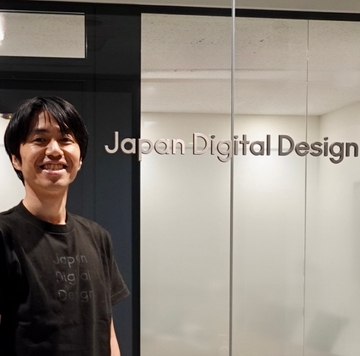Kry is reimagining health care across Europe by delivering high-quality care with a digital-first focus. With the Kry app on your smartphone or tablet, you can have a video consultation with a doctor, nurse or therapist within minutes, no matter the hour or your location.
Founded in Sweden in 2015, Kry has helped more than 3 million patients and set up operations in 30 European markets. In 2020 the company grew by over 100%, as the pandemic sparked sign-ups from new customers who needed virtual, safe medical appointments.

With 600-plus employees, Kry recognises the value of effective communication. An early engineering hire introduced Slack to the team, and it was quickly taken up by the rest of the organisation. Slack has since helped Kry make good on its commitment to transparency and visibility.
“We started using Slack even before email, which was great because then we didn’t have to work on changing behaviours,” says Joakim Röstlund, Kry’s medical director. “People just accepted the idea that this is the tool we use to communicate and collaborate in the company.”
As Kry evolved, so did its use of Slack. Slack is now intrinsic to its day-to-day operations, allowing the company to move work forward faster and stay compliant in a strictly regulated industry. With workflows and alerts, Kry has streamlined its processes and reduced incident response times. With channels—a central place for sharing messages, tools and files—the wider business can access specialist knowledge while clinicians can pool their resources and take advantage of in-house expertise. Here’s a look at how Slack helps Kry continue to improve both its platform and its employees’ working lives.
Streamlining IT requests and bolstering collaboration
Although Kry always had Slack as its primary messaging platform, it has continually optimised its channel usage and introduced apps to speed up routine workflows. In its startup days, when employees had IT issues, they would send a direct message (DM) to someone in the IT department. They didn’t always make contact with the right person, however, and there wasn’t a publicly viewable repository of solved queries. For a company that values transparency and visibility, that was a problem.
Kry established the #ask-it channel, which is monitored by a team of IT experts, and all questions and requests are solved there. According to Vaikunth Srinivasan, Kry’s IT operations specialist, there was some initial resistance to the new system, as people were self-conscious about posting their issues publicly.
“We did a good job of reassuring them that there would be no judgement, and they saw that for themselves when they raised problems in the channel. Colleagues chime in on the thread, saying, ‘That’s happened to me too,’ so we can be more efficient and help them all at the same time,” Srinivasan says.
Other Kry departments, such as legal, finance and HR, saw how #ask-it streamlined the requests process and decided to set up “ask” channels of their own. Kry also uses the Halp app for ticketing; user queries are turned into tickets that can be assigned, prioritised and dealt with all inside Slack.

The ticketing process has proved useful for tracking performance metrics as well. Before, the IT team was often asked to provide statistics on the work it had done, but they were almost impossible to produce.
“Now I can get a concrete count on the number of tickets handled, along with a rundown on the trends that have developed,” says Daniel Vázquez, the global head of information technology at Kry. “Thanks to having a ticketing system within Slack, we’re able to say that for every 145 employees, we need one IT support technician. That means we can be smarter with our resources.”
Kry’s busy tech department has created two channels—#ask-tech for everyday requests and #on-call-tech for serious, time-critical issues. It also uses workflows to streamline requests and reduce the number of out-of-hours alerts to on-call staff.

“We don’t want just one report saying, ‘My Wi-Fi doesn’t work,’ because then we have to follow up with more questions to find out if it’s a full-blown network situation. The Slack workflow gathers those insights automatically, and it frees us up to concentrate on getting issues fixed quickly.”
The tech department comprises several different teams, and it uses the Reacji Channeler app to redirect issues to those best placed to handle particular requests. Each team has been assigned its own emoji, and whenever anyone adds it as a reaction to a question, the query gets pushed to the correct team channel. “The #ask-tech channel can be bombarded with all sorts of issues, and this is an easy way to get the right eyes on them as soon as possible,” Srinivasan says.
Srinivasan recently found himself in a medical clinic, trying to figure out why its fibre-optic cables had stopped working. He went alone because of Covid-19 restrictions, but Slack allowed him to consult with his colleagues minute by minute.
“I’m not an expert in cables going into buildings, so it was great that I could ask for advice in Slack,” he says. “We had individual threads exploring the different possibilities; everyone was commenting. There was a real sense that they were there with me, and we were able to solve the issue in record time.”

Securely collaborating with external partners in Slack Connect
At Kry, Slack is more than an internal tool. The company depends on Slack Connect to collaborate with partners and vendors, including Halp, Zendesk and Amazon Web Services.
“It usually happens quite organically,” Vázquez says. “At some point during a conversation with a vendor we ask, ‘Do you guys use Slack?’ If the answer is yes, then there’s almost an immediate agreement to create a channel so that we can follow up from the meeting. It’s super-simple.”
Kry also spins up shared channels for vendor conversations that require a lot of back and forth, such as contract finalisations. Rather than sending an email asking for clarification on a particular legal term, both parties can just go to the channel and get an answer right away.

“Signing a contract requires maybe three or four teams, like legal, finance, IT and security, and you want to bring them all in really quickly. Using Slack Connect is much more efficient than receiving a whole load of emails with no background and no continuity.”
Sharing knowledge and preventing errors with Slack channels
Kry is deliberate about empowering its employees, and with Slack, it can ensure that knowledge is never siloed. The #ask-quality channel provides a central location where the wider business can access specialist knowledge from the quality control team. Slack also enables Kry to keep a close eye on the medical content that it creates, such as emails to patients, brochures and web pages. Anyone involved in content production, from UX designers to marketers, can request that the quality control team review their work from a medical standpoint in #medicalreview-se.
Before those channels were set up, employees would DM their queries to various members of the team on an ad hoc basis. “It was a bit of a chaotic situation, because I didn’t have any control over how much work my employees were putting into those kinds of requests,” says Röstlund, who also heads up the quality control team. “Now it’s much more organised, and no one is overburdened with questions.”
Building community across dispersed teams
The past 18 months have been a busy period for Kry, with new rules around Covid-19 protocols coming thick and fast. Slack has become its command centre for dispensing up-to-the-minute instructions and updates and then measuring engagement.
“With Slack, we can communicate new policies straight away and see that everyone has read them and reacted or given us some sort of confirmation. I think that would be so difficult to do if we were using email or another platform,” Vázquez says.
Throughout Kry’s operations in Europe, Slack helps it provide customised support to all the health-care professionals it employs. In the U.K., where the company is called Livi, the #livi-connections-uk channel helps doctors solve any human resources issues they might encounter. It’s monitored by community managers who handle everything from payroll and scheduling requests to questions about career progression and work-life balance.
Vázquez and Srinivasan describe themselves as two of Kry’s biggest transparency advocates, and Slack, which has openness built in, is where the majority of their work happens.

“I don’t believe people can be successful without getting the full context,” Vázquez says. “Slack makes it easy to provide it not only to our IT teams but to every other team that works with IT. Giving them that knowledge actually helps them perform better, as transparency drives teamwork.”
Srinivasan agrees that Slack helps the company feel like a community. Kry’s C-suite executives are visible and active on Slack; it’s easy for employees to reach out to them, and no one is off-limits. The company’s culture puts humanity first, and Slack social channels are places for its people to connect.
“We have channels where we can post pictures of the lunch we just made or the nice view that we saw on our walk,” Srinivasan says. “Before Covid-19, we had a public channel, and I could post, ‘I’m going for a drink after work,’ and end up with 30 people who might never have spoken to each other before just showing up. With email, you’d be going back and forth on a particular topic but you wouldn’t have a chance to really get to know someone.”
In April 2021, Kry announced a funding round of €262 million to fuel its European expansion. “Slack was part of Kry’s DNA from early on, but we have expanded its use case,” Vázquez says. “It’s where we get work done and promote transparency, and we’re continually finding new things that we can do with it.”















